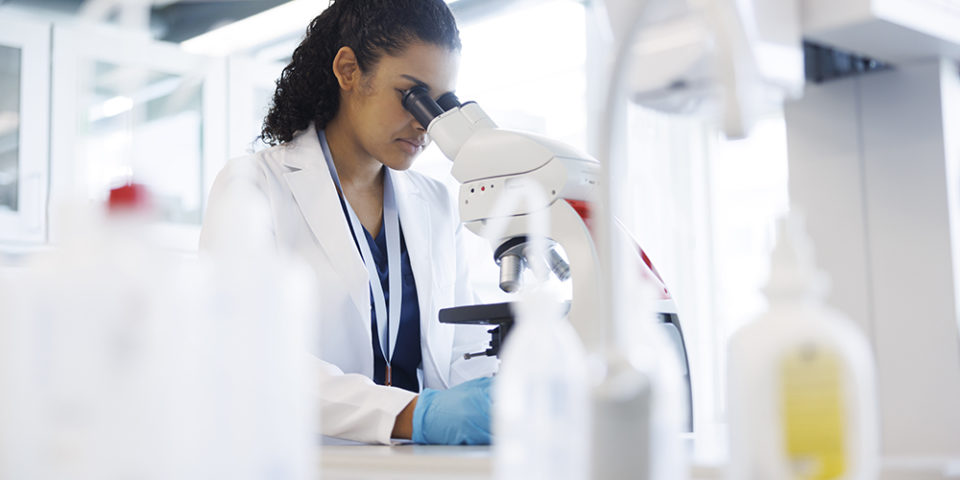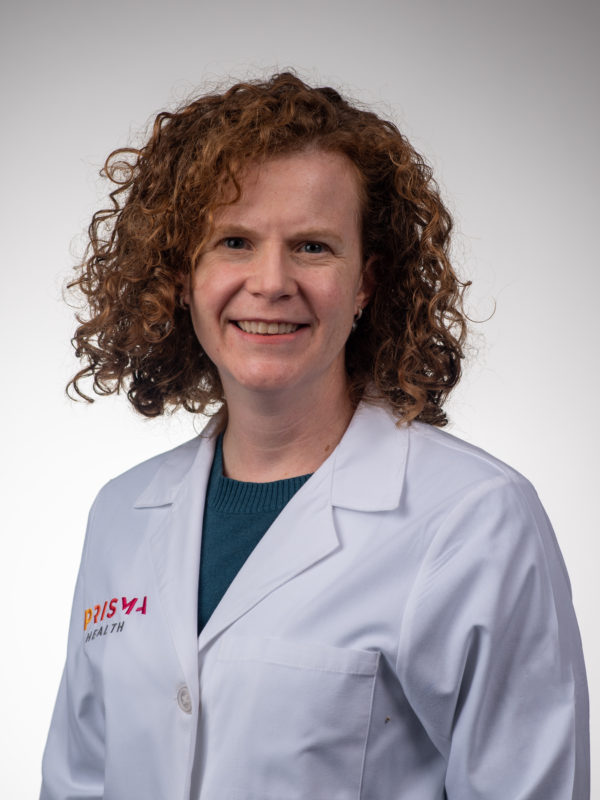How does genetic testing for cancer risks work?
While most cancer happens by chance, about 10% of cancer runs in families. Genetic testing offers a way to see your potential cancer risks before that cancer ever develops. Direct-to-consumer companies like 23andMe offer limited testing but aren’t thorough and don’t provide the most accurate results.
Lindsay Metcalf, genetic counselor, explained how genetic testing for cancer risks works, the benefits of knowing your hereditary cancer risk and why having a “cancer gene” doesn’t necessarily mean you’ll develop cancer.
All cancer is genetic – but most cancer is not inherited
“All cancer cells are basically cells that have acquired genetic mutations which cause them to misbehave. As humans, we all have a chance for mutations to occur in our genes which can lead to cancer. Most of those genetic mutations occur randomly or because of specific environmental exposures, which explains why most cancer is not hereditary. However, when a person inherits a genetic mutation in a gene that typically helps prevent cancer, that means that they are one step closer to cancer than another person.
Does having a ‘cancer gene’ mean you will definitely get cancer?
“The idea that certain genes are ‘cancer genes’ isn’t correct,” said Metcalf. “In reality, many genes work together to keep our cells healthy. These genes help our cells know how to replicate, repair damage to DNA and suppress tumors.”
When those specific genes undergo mutations, though, they can no longer effectively locate damaged DNA, repair it, or suppress tumors. This allows mutated cancer cells to continue to multiply. While your risk is increased by having one of these mutated genes, it is still not a given that you will develop the disease.
“When we get results that show a patient has a hereditary cancer genetic mutation, we dive into exactly how high the specific cancer risks are for that patient. For example, we may say that one genetic result may increase breast cancer risk to 40%, but a different result in a different gene may increase the risk to 80%. We compare those risks to the average person and come up with a plan.”
What are red flags for hereditary cancer risk?
Risk factors for hereditary cancer include:
- More than three family members with related cancers, affecting multiple generations. One example of this would be former President Jimmy Carter. His father and three of his four siblings all died of pancreatic cancer.
- Early onset of cancer. A colorectal cancer diagnosis at age 28 when the average diagnosis happens after 50, for example, would suggest a hereditary cancer risk.
- Multiple primary cancers in one person. Rather than one type of cancer that spread to multiple places, this refers to multiple different cancers in different places.
- Specific types of cancer are more likely to run in families. A family history of pancreatic, ovarian, male breast cancer or metastatic prostate cancer raises a red flag.
- More than 10 colon polyps in one person. A few polyps here or there as we age is normal, but more than 10 is a concern.
What benefit does knowing your hereditary cancer risk provide?
“For some people, they may feel they don’t want to know their hereditary risk, if any,” said Metcalf. “And that is OK, that’s a personal choice. But there are distinct benefits to knowing your risk in full.”
With genetic testing, we can take certain steps to lessen future risks or even prevent certain types of cancers from occurring, including:
- Risk-reducing surgeries. Preventive surgery may be offered for those who have genetic mutations that suggest a high risk for cancers of certain non-life-sustaining body parts.
- Medications. There are medications that can lower the risk of developing breast or ovarian cancers.
- Increased surveillance. Those with increased hereditary risks may receive scans or other tests at an earlier age or more often. Even if the genetic testing is negative, if familial history contains multiple cancers of the same type within the same family, increased screening may still be recommended.
- Clinical trials. Research is ongoing and medical science continues to develop and test new medications or treatment plans that help to lessen the chance of a hereditary cancer developing.
How does genetic testing work?
“When you come in for your genetic counseling visit, the first thing we’re going to do is just have a conversation about your own personal medical history,” said Metcalf. “Then we discuss any family history of cancer, including the age of your relative at diagnosis, which type or types of cancer might run in the family, whether it was a primary tumor or metastasized or other relevant details. Also, if any family member has previously undergone genetic testing, it can be very helpful if you bring in copies of their results.”
To perform the test, a blood sample is taken and shipped to a testing lab. At the lab, they’ll check over a specific list of genes recommended by the genetic counselor that are known to contribute to hereditary cancer risk.
After two to three weeks, the results are delivered to your genetic counselor, who looks them over and contacts you directly. You may be contacted only over the phone or asked to come in for an in-person meeting.
Receiving your genetic testing results is only the beginning
“Genetic counselors don’t just hand you your genetic test and say, ‘well, good luck!’ We follow patients after that initial testing session,” said Metcalf. “It’s our goal to meet every year. As information and current research expands and changes, our recommendations may change along with it.”
Prisma Health’s genetic counseling clinic works with labs who often provide free genetic testing for cancer to immediate family members if a patient has a positive result on their own test, to help everyone in the family stay informed. The goal is to prevent cancer before it occurs and thereby prevent suffering or potentially save lives.
Find a doctor
Whether you’re looking for a primary care physician or need to see a specialist, we’re here to help with experienced, compassionate care near you.
Find a Doctor

